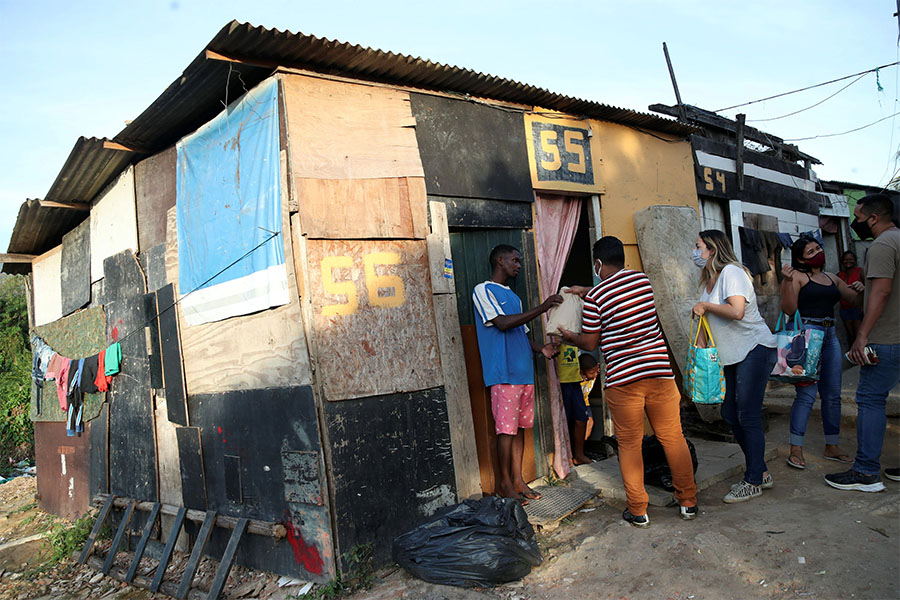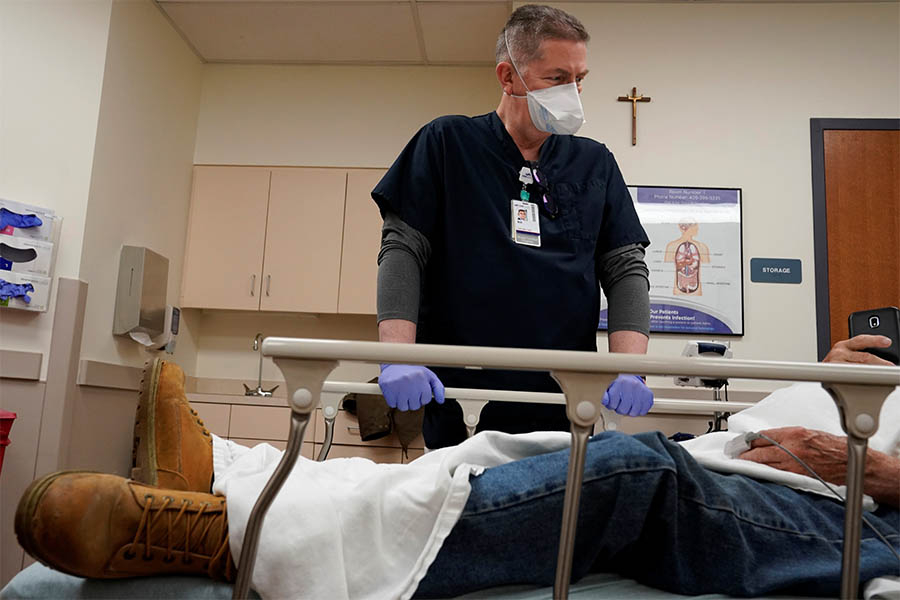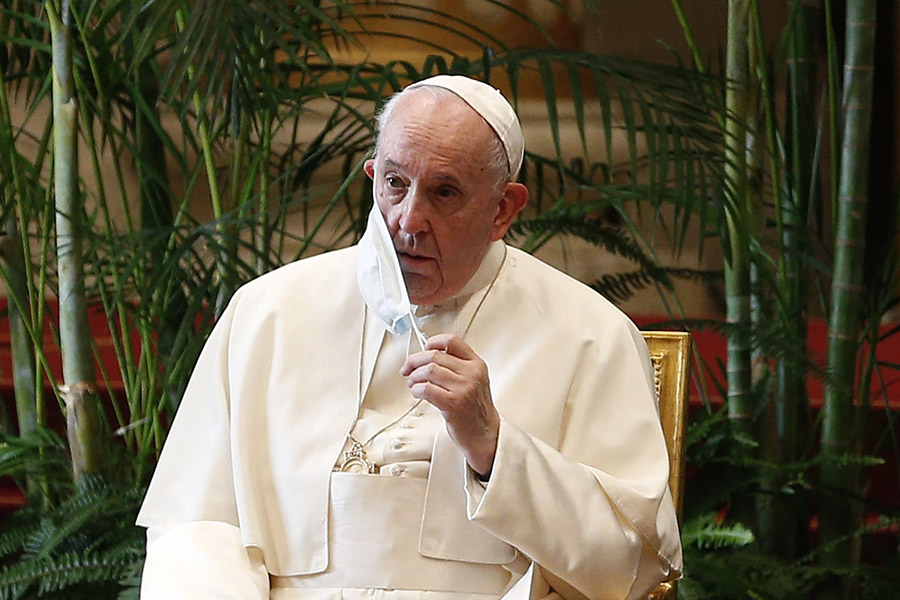The Archdiocese of Baltimore announced Feb. 10 the elimination of 25 positions at the Catholic Center, its administrative headquarters in downtown Baltimore. Among the positions, 14 were vacant and will not be filled; 11 people were laid off, although some may be transferred to other positions within the archdiocese.
All those laid off will be offered a severance package of up to 20 weeks’ pay, health insurance through the severance period and outplacement assistance. The layoffs will be effective Feb. 26.
Archbishop William E. Lori said the reorganization was the result of a shortfall that has resulted from costs to operate the Catholic Center growing at a rate of about 3 percent per year, even though the number of employees did not increase. At the same time, income increased by only about 0.6 percent, primarily driven by flat offertory collections at parishes, a portion of which supports the Central Services through a tax called the cathedraticum.
In July 2020, the archbishop appointed a task force to study ways to find $2.5 million in cost savings and/or sustainable sources of income. The task force included a member of the Board of Financial Administration (the archdiocesan finance council) and the College of Consultors (a group of priests that advises the archbishop), as well as key managers from the Central Services staff.

Archbishop Lori said the goal was to not cut into the mission of the archdiocese, but “reimagine things that might be done better in a different way. … I don’t think any plan is perfect, but I can say that we made a very good effort to do exactly that.
“The primary mission, of course, is evangelization,” he said. “The primary mission is helping parishes fulfill their mission as centers of faith, worship and service and a great concerted effort was made to do just that.”
As part of the reorganization of personnel, the Department of Evangelization will become the Institute for Evangelization. Some positions were eliminated and others will be realigned. The new institute will encompass pastorate planning efforts currently supported by the Office for Pastoral Planning.
The archbishop said the goal will be to support parish efforts to inspire missionary discipleship through Emmaus Teams for Parish Renewal. “The Department of Evangelization isn’t what evangelizes, nor will the institute evangelize. They are catalysts for helping evangelization to occur where it needs to occur, which is in our parishes.”
Archbishop Lori said the archdiocesan financial model worked when he arrived as archbishop in 2012, but that in past years, “even though we weren’t growing the operation, our income wasn’t keeping pace with the rising cost of maintaining both our workforce and our programs.”
It became apparent, even before the COVID crisis and accompanying shut down of public Masses in parishes, that significant changes were needed.
John Matera, chief financial officer of the archdiocese, said, “We would have done this without COVID. COVID only made (the situation) more difficult,” he said.
The archdiocese’s Central Services and parishes used money from the Payroll Protection Program – government loans that can be forgiven under certain conditions designed to keep people employed at the height of the coronavirus crisis – to fill the gap created by lower offertory collections.
“It stabilized us and did exactly what we needed to do and not have to make layoffs at that time,” Matera said.
However, the round of positions eliminated in February will affect all departments at the Catholic Center, he said, with evangelization, the chancery and communications most affected.
The archdiocese will cover the projected $2.5 million shortfall with about $1 million in sustainable increases in revenue, including drawing $650,000
annually from an endowment trust to provide long-term health care for senior and retired priests
A parking garage adjacent to the Baltimore Basilica will generate $100,000 per year, and changes to the cathedraticum and parish share of the annual appeal will net about $250,000. The remaining $1.5 million was achieved through the elimination of 25 positions.
Matera said it is important to look at all the changes together, instead of one component at a time. “The goal was to have the least impact on the parishes.”
He said the task force comprehensively reviewed how parishes contribute to the Central Services upon which they rely to perform their missions. The cathedraticum is assessed against general parish income with varying percentages at different levels of income assessment, traditionally ranging from 6.5 percent to 15 percent of the parish’s offertory collection. The tax rate is changing to 7 percent to 17 percent, with the income ranges for each percentage also changing.
As a result, 91 parishes that receive less than $800,000 of annual “plate income” will see a decrease in tax, from 1.3 percent to 20 percent in certain categories. Conversely, 49 parishes that collect more than $800,000 annually will pay as much as 8 percent more.
The archdiocese is also making changes to the parish share of the Annual Appeal for Catholic Ministries, which currently provides a rebate of 25 percent to parishes for each dollar raised up to the parish’s goal, and 50 percent above goal. The Archdiocese of Baltimore is the only diocese of a number of comparably sized dioceses reviewed by the task force that provides a share of the funds before the parish goal is met. Beginning in 2022, the structure will change to 10 percent before goal and 40 percent above goal, with a net rebate of 82 percent of any funds raised above a stretch goal.
Matera said, “This, along with other planned changes, will help streamline certain activities and overall limit the overall impact to parishes. Collectively, the changes will add about 0.4 percent to the operating budget of most larger parishes and reduce operating costs for the majority of parishes by up to 2 percent.”
Email Christopher Gunty at editor@CatholicReview.org
Editor’s note: This story was updated at 12:51 p.m. on Feb. 16 to clarify that withdraws from the endowment go to support senior and retired priests. The story was updated 3:28 p.m. Feb. 17 to clarify references to changes to the annual appeal that will begin in 2022.
Also see
Copyright © 2021 Catholic Review Media







